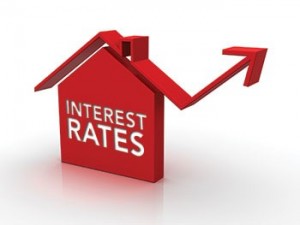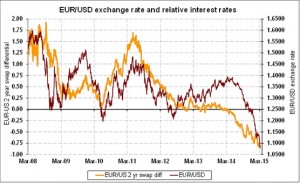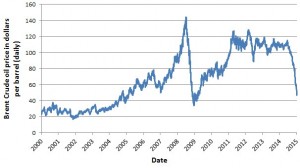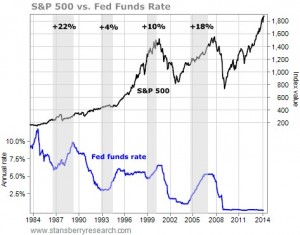The increased speculation that the U.S. Federal Reserve will hike rates in December 2015 means that you should be aware of all the implications for investors, both short term speculative and those in it for the long haul. A hike in interest rates will affect all the markets which include stocks, Forex and commodities as well the indices that are representative of these different markets. The interest rate that is referred to is the rate charged to banks when they borrow money from the Fed in order to cover their short term obligations. Interest rates are one of the most important measures that the Fed has of controlling the money supply, which is an important aspect of the monetary policy that might change from time to time. While all the markets are affected by a rates rise, the actual effect can differ from market to market and we will examine the effects and the differences.
Forex Market
The Forex market is probably affected more directly by a rates hike than any of the other trade-able assets. An increase in the interest rate would generally result in an increase in the value of the U.S. Dollar (USD), but with the rate at 0.25%, the expected increase of 0.25% will result in a rate of 0.5% which might not be sufficient to attract the significant offshore investment in U.S. dollars that would increase the value of the dollar. Another factor to consider is that an increase in the interest rate generally results in an increase in the rate of inflation which causes a currency to drop in value. This however is a more long term effect of a rates hike.
While the interest rate is an important factor in valuing a currency, sound economic policies and political stability can have an effect on currency values as has been seen with the effect the economic crisis in Greece had on the euro (EUR). The effect of political instability on the Brazilian real (BRL) has seen it drop from one real being able to buy $0.40 on 26 November 2014 to only $0.26 on 15 November 2015. The net result is that cash invested in Brazil attracts an interest rate of 11.35%, providing a good example that a higher interest rate does not always improve the value of the currency. The U.S. dollar on the other hand despite having experienced very moderate economic growth and a low interest rate, but a very high degree of political stability, has maintained its value and even improved against other currencies in the recent past. One result of this is that the U.S. dollar is seen as a safe haven, encouraging investors who are averse to risk to invest in this currency.
Stock Market
While an increase in the interest rate does not have as direct an impact on stocks as it does on forex, the effect does filter through over time. Because a hike in the interest rates means that the banks will have to pay more to borrow money from the Fed, it follows that the banks will in turn charge their borrowers more. This can have a direct effect on large corporate borrowers whose shares might be listed on the stock exchange. The higher cost of capital borrowing slows the rate at which corporate expansion can take place, reduces profits and ultimately reduces the value of the company’s stock.
The other effect comes from consumers having to pay higher rates on their home bonds and credit cards, which reduce their disposable income and purchasing power. This has an adverse effect on retail sales, again reducing corporate profits and thus stock values. If you are interested in trading stocks then the Option.FM trading platform will show you the current stock values and it also has a very important indicator which tells you which in direction the majority of investors believe the price can be expected move. This investor sentiment gauge is an important tool for trading accurately.
Commodities
Global commodity prices are in the main determined by the difference between supply and demand. An excellent example of this, how the weak Chinese economy has resulted in a decrease in the imports of commodities such as oil, steel and many others with the drop in demand causing falling prices.
Meanwhile, the Saudi Arabian policy of increasing oil production to protect its market share has disturbed the supply demand ratio causing oil prices to fall. The other factor is the inverse relationship the U.S. dollar has with commodities that have their price quoted in dollars. When factors, such as an increase in the interest rate in the U.S., cause the dollar to strengthen, importing countries have to pay more in their local currency for the commodity. Countries that export commodities on the other hand benefit by receiving more of their local currency as the dollar strengthens.
Indices
Indices are, in reality, comparative groupings of the different markets or segments of markets. Whatever effect an interest rate rise has on the components of an index such as the Dow Jones Industrial Average (DJIA), a similar effect will be seen on the index which merely reflects the price performance of its components. Indices such as the ICE Index measure the value of individual currencies against anther currency. The U.S. dollar ICE index moves up or down as the dollar changes in value against a basket of the six other most important currencies. The degree to which the indices are affected will be precisely the same as that to which its components prices move.
Conclusion
Currency values are affected by interest rate changes to a far greater degree than any of the other tradable assets. U.S. dollar value fluctuations can be easily watched on the Option.FM trading platform which gives you real time information on how the dollar is performing against other currencies. The periods before and shortly after an interest rate change provide the volatility necessary to do profitable forex trading.





